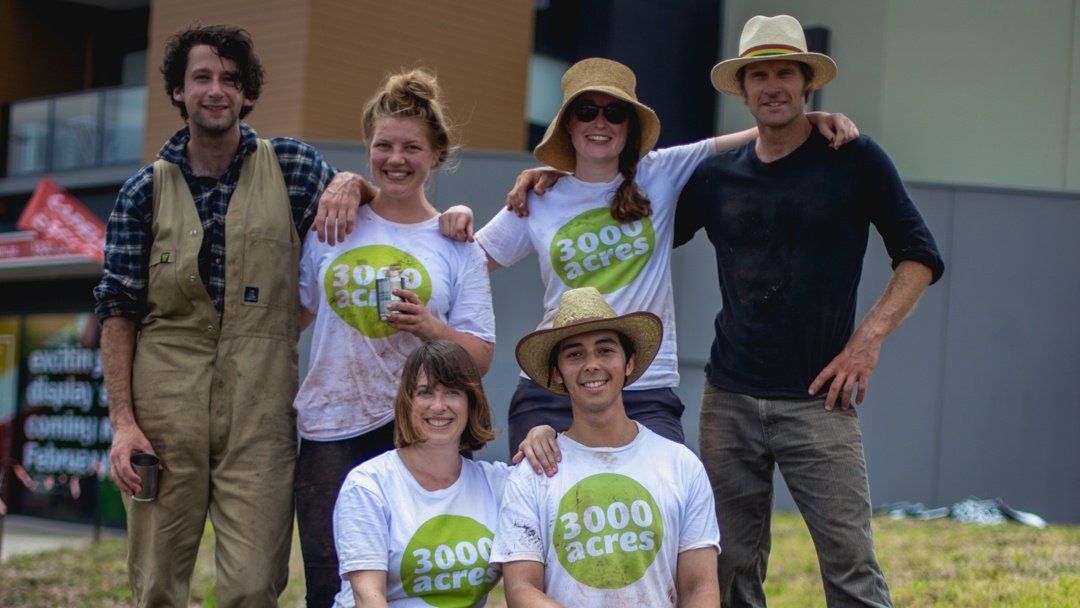- About
- Our Work
Our work
This website showcases features of the built environment that make it easier for Australians to be more active in their everyday lives to improve their heart health. It’s a cause the Heart Foundation has been passionate about since its inception more than 60 years ago.
The Heart Foundation has, since 1959, been fighting the single biggest killer of Australians – heart disease.
Cardiovascular disease is the cause of one in four of all deaths in Australia, with three-quarters of the population at risk of developing cardiovascular disease. Most cardiovascular disease risk factors are preventable through leading a healthy lifestyle, having a healthy diet, receiving regular exercise and being a healthy weight (1). Australia's National Physical Activity Guidelines recommend we receive at least 30 minutes of moderate activity - such as walking - most days of the week.
Unfortunately, four in five people in Australia do not get enough physical exercise (2). A key factor is that the built environment is not conducive to engage in walking, cycling or other forms pf physical activity as part of everyday life.
Urban design and transport planning that considers the health of local communities contributes significantly to physical activity and health outcomes. People who live in walkable environments are 1.5 times more likely to get enough physical activity compared to areas where walking is unsafe, inconvenient or difficult (3).
Physical inactivity remains a major health issue and is calculated to cost Australia $2.4 billion each year in additional health costs alone (4).
Alongside its internationally recognised medical research, the Heart Foundation also advocates for environmental and behavioural changes to provide all Australians with opportunities to be healthy and active throughout their lives in the places they live, study, work and play.
This website is part of that advocacy.
The Heart Foundation is working towards the creation of healthier built environments and for decades we have supported planners, developers, traffic engineers, local governments and decision makers, communities and others to work towards creating streets, towns and cities that allow, support and encourage active, healthy lives.
Healthy Active by Design provides the best-available evidence, practical advice, checklists and case studies to help with the development of healthy neighbourhoods and communities that promote walking, cycling and an active way of life.
We want it to be used to inform best practice and advocate for the improvement of Australia’s places and spaces. It showcases the little and large changes that can lead to population-wide improvement in physical activity levels and heart health.
How the built environment affects heart health
In the developed world, 80 per cent of people live in urban settings and 90 per cent of our time is spent indoors. The built environment has now become our natural environment and this has a profound influence on our health, tied as it is to lower levels of physical activity.
In less than 100 years, we have gone from a population likely to walk to work or school to one likely to drive or be driven. Our work has changed from physical, manual or active to largely seated and sedentary. Our leisure has moved from the great outdoors to the not-so-great indoors and the amount of time we spend at work, or in traffic, impacts the time we have available to be active or prepare healthy meals.
Features of the built environment that can increase walkability and physical activity for all Australians include:
- the number of destinations (community facilities) within walking, wheeling and public transport distance
- diversity in land use, housing choice and mixed-use planning
- medium to high density housing
- access to public open space and nature
- building design
- movement networks
- access to healthy food
What is in the website and who is it for?
Healthy Active by Design is a practical guide to incorporating health and physical activity into the planning and design of our built environment.
This useful tool offers the best-available evidence, advice and examples to assist with the development of healthy and active neighbourhoods.
We know it’s easier for all Australians to be active in local areas where:
- residences are close to shops, schools and services to enable walking, cycling or use of public transport, instead of driving
- there is supportive infrastructure such as connected footpaths, safe road crossings and cycle paths
- there are quality spaces that improve wellbeing – and are worth visiting – such as green areas, plazas, open space and recreational facilities.
This website reveals how physical activity levels are linked to the shape of a local environment and why it matters how far away the nearest park or fresh-food outlets are. It provides guidance to facilitate this.
This is a website for those designing and implementing new communities, those seeking best-practice changes within existing neighbourhoods and those keen to understand, as the Heart Foundation is, the powerful connection between opportunities to be active and improved heart health.
Read it, use it and advocate with it.
References:
- World Health Organisation, 2022, ‘Physical Activity’ Fact Sheet, accessed 29 November 2023, https://www.who.int/news-room/fact-sheets/detail/physical-activity
- Australian Bureau of Statistics, 2018. National Health Survey. First results, 2017-18, cat no. 4364.0.55.001. December
- Public Health, 2 Feb 2023, https://www.bu.edu/sph/news/articles/2023/us-neighborhood-walkability-influences-physical-activity-bmi-levels/#:~:text=They%20found%20that%20adults%20who,in%20neighborhoods%20with%20low%20walkability.
- Australian Institute of Health and Welfare. 2023. ‘Economics of Sport and Physical Activity Participation and Injury. Date accessed 22/9/2023.
https://www.aihw.gov.au/reports/sports-injury/economics-of-sport-and-physical-activity/contents/about
Stay informed. Sign up to our newsletter.
I agree that I have read and I accept the Heart Foundation's Privacy Statement.
We will get back to you as soon as possible.
Please try again later.
Stay informed. Sign up to our newsletter.
I agree that I have read and I accept the Heart Foundation's Privacy Statement.
Thanks for subscribing to our newsletter.
Please try again later.
All Rights Reserved | National Heart Foundation of Australia


